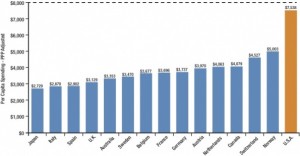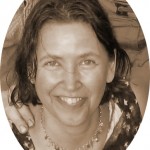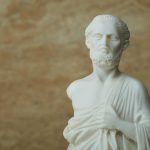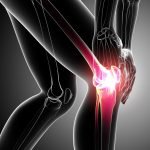How to Grow Younger as You Grow Older
Nature Cure
Sussanna Czeranko, ND, BBE
The way to live a long and healthy life is to get something wrong with you and learn how to take care of it. This is true, not only for the physician, but for patients, too.
Betty Radelet, 2009, p. 97
Park your “automobile” at a table where foods are served which have the stored sun energy which moves at 186,000 miles a second. They will cure you. You will grow younger as you grow older.
Harriet Zoll, 1924, p. 1126
Examine yourself well, and learn to understand that the unhealthful conditions of our age are not the will and the work of nature, but only miscarriages of our civilization!
George Hiller, 1904, p. 300
 On December 3, 2011, I attended the Oregon Association of Naturopathic Physicians and National College of Natural Medicine (NCNM) Living Legends Awards Dinner, where the profession was invited to share in celebrating Dr. Rick Marinelli for his commitment to excellence and selfless contributions in the advancement of natural medicine. In previous years, Dr. Betty Radelet and Dr. Ken Peterson had received similar awards for their service to the profession. That evening also highlighted three exceptional NCNM alumni, Dr. Ed Alstat, Dr. Joseph Coletto, and Dr. Jared Zeff, who were inducted into the NCNM Hall of Fame.
On December 3, 2011, I attended the Oregon Association of Naturopathic Physicians and National College of Natural Medicine (NCNM) Living Legends Awards Dinner, where the profession was invited to share in celebrating Dr. Rick Marinelli for his commitment to excellence and selfless contributions in the advancement of natural medicine. In previous years, Dr. Betty Radelet and Dr. Ken Peterson had received similar awards for their service to the profession. That evening also highlighted three exceptional NCNM alumni, Dr. Ed Alstat, Dr. Joseph Coletto, and Dr. Jared Zeff, who were inducted into the NCNM Hall of Fame.
I was honored to sit with one of the most amazing women in Portland. As we listened to the speeches and shared our life’s journeys, I witnessed her eat a simple meal of raw vegetables that were artistically arranged on her plate. This article is dedicated to Dr. Betty Radelet, whose life is a testament to the wisdom of our elders. Her inspired conversation at the table and address to the gathering that evening reminded me of why I became an ND. For those who do not know Dr. Betty, she lives her talk and exudes more life than anyone I know. At 91 years old, she embodies the roots of our medicine and has just released a CD compilation of her book Anecdotes and Antidotes.
Helping patients live vitally into old age has been a topic for Dr. Radelet throughout her career. We can find that same passion in the early NDs who came before her. Primarily, they believed in prevention of disease. There is a certain smugness that some medical professionals present as they report life span rates rising in many countries as an indication of progress made toward longevity. However, concomitant rising and unsustainable costs have blunted our enthusiasm about maintaining that progress (Figure). We have become overconfident even as we marvel at the accomplishments of industrial strength around the globe and computer technology knitting the planet together as never before.
This same kind of enthusiasm and sense of growth and potential was present among our early 20th century NDs. They felt equally awed by huge milestones in agricultural and manufacturing capacity, by rapid improvements in communications networks predicated on telegraph and early phone systems, and by landmark events, such as the World’s Columbian Exposition in Chicago, Ill., in 1893, and the World’s Pure Food Exhibition just over a decade later, in 1907, in the same city. A caution within that optimistic period, though, showed up in one physician’s admonition:
We have, in these days of ours, reached the pinnacle of progress; we stand on the summit of civilization, on the apex of art and triumphant science; we deem ourselves superior to anything past ages ever knew . . . [yet] we feel fettered and weak in our struggle for existence; the stormy waves of life often break down our strength; we suffer from bodily weakness, consuming nervousness and early decay. (Hiller, 1904, p. 299)
In fact, those same early NDs expressed confident optimism for those raised under the right conditions:
[A] human being born of healthy parents, perfectly healthy himself, and spending his vital force properly and economically, may live, as a rule, from one hundred to one hundred and twenty years, and in exceptional cases may attain the age of one hundred and fifty, and even more. (Lust, 1900, p. 41)
The reality of longevity at the turn of the 20th century was grim, however, and the notion of a 12-decade life span seemed a stretch. In 1900, the life expectancy in the United States was 48.3 years for men and 51.1 years for women (Kinsella, 1992, p. 1197) compared with today’s life expectancy of 76 years for men and 81 years for women (United Nations Statistics Division).
The Body Is a Temple
Early NDs contended that rising industrialization and accompanying changes in lifestyle and environment were primary reasons for the retrogression in health. Hiller stated that “our industrial life is contrary to nature; our daily duties remove us more and more from nature, and it has become a difficult task to combat this denaturalization of our industrial conditions” (1904, p. 300). As our way of life succumbs to faster production cycles driven by information technology and increased threats to the natural world, we are finding ourselves reiterating the very sentiments our elders announced a century ago.
Hiller spoke to the heart of the matter: “We do not live in accordance with . . . nature’s laws. Nearly all the habits of our daily life transgress these laws and are in conflict with our own instincts and our intelligence” (1904, p. 301). Another prominent ND of the period, Ehret, pointed out a parallel concern, that as the world in which people lived and worked became faster and more toxic, individuals were also losing touch with their own bodies. He felt that “every person should know his own [body] and how to run it; there are no two just alike” (Ehret, 1918b, p. 558). People needed to become “an expert in knowing the body and taking care of it” (Ehret, 1918b, p. 559). Naturopathic physicians believed in the purity of the human body and understood the price of delinking personal health and environment from a natural lifestyle: “For the desecration of the human temple there is a heavy penalty” (Ehret, 1918a, p. 435).
With regard to the ideal factors in vital longevity, Professor Javali, an Italian physiologist, studied the lives of Italian centenarians. He found that the outward constitution of people had little influence on their longevity; rather, it was their long-term nutrition and lifestyle habits that made the difference:
Whether one be fat or lean, straight or bent, strong or weakly, whether one had good teeth or bad ones, whether he be a smoker or not, or a large or small eater—all this will not influence his chances of reaching an old age in the least. (Lust, 1903, p. 138)
What Javali found in his inquiries was that “the greater number of the centenarians either had been followers of the Vegetarian Principles or had eaten meat only sparingly, or on rare occasions only” (Lust, 1903, p. 138). The preparation of the food was plain and yet plentiful. Alcohol was not consumed, except for wine (Lust, 1903, p. 138).
The early NDs recognized a clear connection between longevity and diet; they also understood that the quality of the food itself, a reflection of the environment, was critical. Ehret saw that a “man is no stronger than his stomach. The troubles of the body originate in the stomach, and by the blood are carried to all parts of the body” (1918b, p. 558). Ehret also advised moderation in eating: “Eat only such food and drink such fluid as God intended man should use to nourish and sustain the body” (1918a, p. 436).
Wood put it this way:
If we desire a strong, active, healthy body, free from pain and disease and obedient to our will, and one that shall so remain for one hundred years or more, . . . let us see to it that none but the purest and most suitable solid and liquid food is supplied to our digestive organs. . . . Pure water is the only liquid agent in existence that will do this. (1902, p. 76)
He provided much detail to his contemporaries, adding suggestions even about the quantities needed. “Very few Americans drink enough water,” he contended: “Eight or ten glasses of water should be taken daily by the average person” (Wood, 1902, p. 76).
Regeneration
The search for health among the early NDs led them to a concept of “regeneration” that linked the importance of food and the true meaning of health. Food a hundred years ago, though, was not compromised in the way it is today. Food additives were few, and the need for prolonged shelf life, long-distance food sourcing, and the centralization of processing and production were just beginning. However, even then, food reform was top of mind. Hiller’s recommendations for food reform included the following:
The greatest possible diminution of our meat diet.
The diminished use of spices.
A more liberal use of vegetables of all kinds.
An abundant daily supply of fruits and nuts of all kinds, according to the seasons.
(1905, p. 4)
Rules were suggested, such as “never eat idly or between meals, . . . never eat when over-fatigued, but rest till actual exhaustion is relieved and a sense of hunger is expressed” (Wallace, 1902, p. 403). With regard to cooking, Wallace recommended to “employ waterless cookery whenever possible, that is, cook fruits and vegetables in their own juices, or in the juices of other vegetables or fruits” (1902, p. 404).
Fletcherizing
Another Italian who added to the enhancement of longevity was Horace Fletcher, who felt that “everybody eats too much” (Kellogg, 1905, p. 53). Fletcher’s eating guidelines were popular with the early NDs. Fletcher believed that people’s eating habits were a response to social custom rather than true hunger and advocated: “[D]o not eat between meals [and] . . . quit eating promptly when your appetite seems satisfied” (Griffin, 1910, p. 342). The essence of Fletcher’s theory was to take small bites of food:
[C]hew the food industriously . . . do not swallow the food until it loses its original taste. This does not mean that the food shall lose its taste or flavor entirely, but it should be chewed until it loses its original taste. (Griffin, 1910, p. 342)
Kellogg, a strong American advocate of healthy lifestyle, explained: “Fletcherizing or thoroughly chewing the food, increases its digestibility to such a degree that decompositions are prevented” (1905, p. 56). Yet another Fletcherism that we are familiar with is “[D]o not drink much water for half an hour before meals or for an hour or two after meals” (Griffin, 1910, p. 343).
The early NDs, then, were focused on food as medicine and on lifestyle as the embodiment of values that respected the life force. Senescence was a natural process, they knew, and overeating in their view accelerated the process. Overeating attributed to excessive waste material in the blood, leading to arteriosclerosis, which was the beginning of old age (Tracy, 1908, p. 210). Lindlahr, too, attributed carnivorous eating habits to aging and the accumulation of waste or morbid matter (1908, p. 302).
Mucus-Forming Foods
The early ND Arnold Ehret advocated a theory of a mucus-less diet healing system that still finds strong support among current naturopathic dietary principles. He classified fruits, starchless vegetables, and greens as mucus-less foods. Ehret wrote about aging and the consumption of mucus-forming foods, which he saw as “unnatural food-material, which in course of time has accumulated, especially in the digestive organs, and which makes its appearance in the shape of mucus-excretion” (1912, p. 436). He saw “all symptoms of ageing [as] latent disease, accumulation of mucus and clogging-up by mucus” (Ehret, 1912, p. 437). Zoll phrased dietary indiscretions this way: “Live vibrating foods do not clog” (1924, p. 1127).
Ehret also wrote many articles on the subject of aging in The Naturopath and Herald of Health. He taught that “if we want to have a vigorous old age, we dare not abuse our bodies in youth” (Ehret, 1915, p. 423). Indeed, Ehret pointed out more than once that the fact that an individual “do[es] not care for his own body can be verified by the thousands of doctors” (1918b, p. 558).
Raw Food
A hundred years ago, Ehret advocated raw food. Today, we may conclude that the interest in raw food and in veganism is a current reaction to Monsanto and the overwhelming erosion of vital longevity by overprocessed foods. However, it is valuable for modern NDs to recall that 11 decades ago Lust himself had much to say about the question of how to live with raw food. He wrote: “Not only is it possible to eat all kinds of fruit, vegetables, corn, and all leguminous plants in their raw state, but even it is possible to make them palatable to the most fastidious palate” (Lust, 1902, p. 107). Indeed, vegetarianism was considered to be a path of “perfected nutrition” (Lee, 1911, p. 289). Lee suggested that vegetarian foods “wisely used, are competent to sustain human life, advance civilization, lessen mortality, [and] increase average length of life” (1911, p. 291).
Harriet Zoll at the time also lectured on “unfired” foods that keep people young. She divided foods into live food and dead food: “Processing and cooking lowers the vibration. The longer the food is cooked the deader it is” (Zoll, 1924, p. 1126). She asked the question: “Do you drink live juices or do you drink dead chemicals?” (Zoll, 1924, p. 1126). She recommended to people new to live foods to make “a list of at least 50 live foods. Try eating each one in its natural state” (Zoll, 1925, p. 51).
Another raw food enthusiast, Helen Sherry, who championed this new way of eating under the banner “apyrotrophers” continued: “It is not enough for us to eat the right things; we must eat them in the right way” (1913, p. 50). Sherry elaborated that “the new vegetarian wants his food with all its nutritive value to the system, that is to say, he wants it uncooked, or unfired, and for that he calls himself an Unfired Fooder, or, in Greek, an Apyrotropher” (1913, p. 50). George Drews, who led the Apyrotropher [unfired fooder] Society, answered the question of raw vs. cooked food: “People may eat cooked food if they wish to do so, but they should eat a larger proportion of clean raw food than they now do” (1914, p. 833).
In any case, the importance of live food was repeatedly emphasized by Zoll: “Food right from the plant vibrates with 100 percent life” (1924, p. 1126). She endorsed that each meal should always begin with a salad: “While hungry make sure of the 100 percent dish. It will start up digestive activity. Live food will comfort the hunger sense and you will not load up so with the slower, cooked foods” (Zoll, 1925, p. 52). At the same time, others made recommendations to “[e]at the fruits that are in season” (Wallace, 1902, p. 403). Another who advocated the raw diet was John F. Morgan. He stated simply that “a raw food diet prolongs life” (Morgan, 1902, p. 512).
Ultimately, the lessons from our early naturopathic pioneers have arrived intact for us. Despite the economic and industrial progress in Western countries, wealth does not assure healthy longevity. The United States ranks 36th in life expectancy (Canada ranks 11th), despite America’s being the biggest consumer of health today (Table and Figure). Something is very wrong with the current health picture. Japanese people spend the lowest among the developed nations and yet live the longest (Organisation for Economic Co-operation and Development, 2010). In America, where the most advanced medical science and technology are available, healthcare costs in the last 44 months of an American’s life equal that spent in all the rest of his or her life (Schleich, 2011). When the early NDs advocated the need for healthy eating to ensure healthy people, they were prosecuted, persecuted, and jailed for being dangerous for the American people. We live at a time when our precious food is being contaminated and adulterated at every step in its journey along the food chain. It is time that we seriously look at what we are eating and why. I leave the last word to Dr. Betty:
Your diet is what you eat, good or bad. A good diet does not have to be complicated. One simple rule that helps: Eat something fresh with each meal. In fact, the bulk of your diet should be raw, fresh foods. (Radelet, 2009, p. 131)
Table. Female and male life expectancy (2005-2010), from the United Nations Statistics Division (2011)
| Rank | Location | Overall, y | Male, y | Female, y |
| 1 | Japan | 82.6 | 79.0 | 86.1 |
| 2 | Hong Kong (China) | 82.2 | 79.4 | 85.1 |
| 3 | Switzerland | 82.1 | 80.0 | 84.2 |
| 4 | Israel | 82.0 | 80.0 | 84.0 |
| 5 | Iceland | 81.8 | 80.2 | 83.3 |
| 6 | Australia | 81.2 | 78.9 | 83.6 |
| 7 | Spain | 80.9 | 77.7 | 84.2 |
| 8 | Sweden | 80.9 | 78.7 | 83.0 |
| 9 | Macau (China) | 80.7 | 78.5 | 82.8 |
| 10 | France (metropolitan) | 80.7 | 77.1 | 84.1 |
| 11 | Canada | 80.7 | 78.3 | 82.9 |
| 36 | Cuba | 78.3 | 76.2 | 80.4 |
| 36 | United States | 78.3 | 75.6 | 80.8 |
Sussanna Czeranko, ND, BBE is a faculty member working as the rare books curator at National College of Natural Medicine (Portland, Oregon). She is currently compiling several collections based on the journals published early in the last century by Benedict Lust. In addition to her work in balneotherapy, she is the founder of the Breathing Academy, a training institute for NDs to incorporate a scientific model of breathing therapy called Buteyko into their practice.
References
Drews, G. J. (1914). Edible thistles. The Naturopath and Herald of Health, 19(12), 832-833.
Ehret, A. (1912). Sick people. The Naturopath and Herald of Health, 17(7), 434-438.
Ehret, A. (1915). Youth and old age. The Naturopath and Herald of Health, 20(7), 423-424.
Ehret, A. (1918a). The purity of the human temple. Herald of Health and Naturopath, 12(5), 435-436.
Ehret, A. (1918b). The care of the human machine. Herald of Health and Naturopath, 23(6), 558-559.
Griffin, S. J. (1910). Horace Fletcher’s ideas of how to attain long life and happiness. The Naturopath and Herald of Health, 15(6), 342-343.
Hiller, G. (1904). The art of living long and free from care. The Naturopath and Herald of Health, 5(12), 299-306.
Hiller, G. (1905). The art of living long and free from care: A guide for rich and poor in sickness and in health. The Naturopath and Herald of Health, 6(1), 1-5.
Kellogg, J. H. (1905). New theory on eating. The Naturopath and Herald of Health, 6(2), 53-56.
Kinsella, K. G. (1992). Changes in life expectancy 1900-1990. American Journal of Clinical Nutrition, 55(6)(suppl), 1196-1202.
Lee, E. (1911). Feeding the human animal. The Naturopath and Herald of Health, 16(5), 289-291.
Lindlahr, H (1908). Why we favor a vegetarian diet, The Naturopath and Herald of Health, 9(10), 302-306.
Lust, B. (1900). Age of the natural man. The Kneipp Water Cure Monthly, 1(2), 41-42.
Lust, B. (1902). True method of healing: Regeneration. The Naturopath and Herald of Health, 3(3), 107-109.
Lust, B. (1903). How to become old. The Naturopath and Herald of Health, 4(5), 137-138.
Morgan, J. F. (1902). The generative life forces. The Naturopath and Herald of Health, 3(12), 511-513.
Organisation for Economic Co-operation and Development. (2010). OECD health data. OECD Health Statistics (database). doi: 10.1787/data-00350-en.
Radelet, B. (2009). Anecdotes and antidotes: Forty years of smiles and tears in a natural health clinic. Beaverton, OR: BJ Publishing.
Schleich, D. (2011). Notes from a presentation on healthcare.
Sherry, H. (1913). A plea for an Apyrotropher Society. The Naturopath and Herald of Health, 18(1), 50-52.
Tracy, S. G. (1908). High frequency electricity to retard old age. The Naturopath and Herald of Health, 9(7), 210-211.
United Nations Statistics Division, Demographic and Social Statistics. (2011). Social indicators: Indicators on health. Retrieved December 23, 2011, from http://unstats.un.org/unsd/demographic/products/socind/health.htm
Wallace, C. L. H. (1902). General rules for the physical regeneration of man. The Naturopath and Herald of Health, 3(10), 403-405.
Wood, A. F. (1902). Influence of water on health and longevity. The Naturopath and Herald of Health, 3(2), 74-78.
Zoll, H. (1924). How to grow younger as you grow older. Herald of Health and Naturopath, 29(12), 1126-1129.
Zoll, H. (1925). How to grow younger as you grow older. Herald of Health and Naturopath, 30(1), 51-54.








